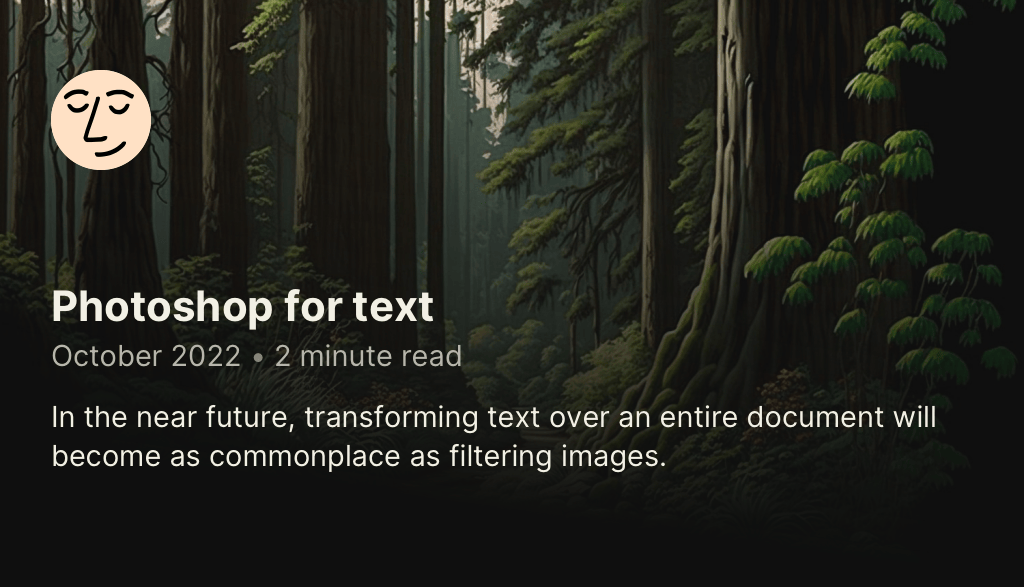Photoshop for text

🌈 Abstract
The article discusses the emerging capabilities in text editing, which are becoming as advanced as image editing tools. It highlights how text manipulation is becoming more sophisticated, allowing users to paraphrase, summarize, and transform text in various ways, similar to how image editing tools like Photoshop allow for manipulation of visual content. The article suggests that these new text editing capabilities will unlock new creative potential, just as image editing tools have done.
🙋 Q&A
[01] The Changing Landscape of Text Editing
1. What are some of the key differences between image editing and text editing that the article highlights?
- The article notes that image editing offers a vast array of options like contrast, saturation, sharpening, blurring, airbrushing, and cloning, while text editing has traditionally been limited to basic functions like cut, copy, paste, find, replace, and spell check.
- It states that text editing has been focused on input, while the next evolution will make it easy to alter, summarize, and lengthen text for entire documents, not just individual sentences or paragraphs.
2. How does the article describe the new capabilities emerging for text editing?
- The article suggests that text filters will allow users to paraphrase text, switch between different styles of prose (literary, technical, journalistic, legal, etc.), and even transform narrative descriptions into dialogue.
- It compares these new text editing capabilities to the way Photoshop made image manipulation easy and reversible when it was first created.
3. What are the technical challenges involved in developing advanced text editing tools?
- The article notes that while text seems easier to manipulate than images, languages have far more rules than images, and a reader expects writing to follow proper spelling, grammar, tone, and logical sequence.
- It states that until now, solving this problem required building complex rule-based algorithms, but now AI models can teach themselves to create readable text in any language.
[02] The Future of Text Editing
1. How does the article describe the potential impact of these new text editing capabilities?
- The article suggests that these new tools will not only be able to transform text, but also accurately summarize text and even expand it with more granular detail in surprising and creative ways.
- It coins the term "synthscribed" to describe the increasing amounts of text that will be synthetically described, transcribed, or inscribed.
2. What are the key technical requirements for making these text editing capabilities seamless and accessible?
- The article emphasizes the need for language models to be local to the device, so that they can be private, offline, and future-proof, similar to how image editing tools work.
- It expresses excitement about efforts to drive towards this direction, making the text editing experience as seamless as image manipulation.
3. How does the article address the potential concerns about these new text editing capabilities?
- The article acknowledges that some of these capabilities may sound "a bit scary at first," but suggests that they will eventually become as mundane as common image editing filters.
- It emphasizes that these new capabilities will unlock new creative potential, just as image editing tools have done.